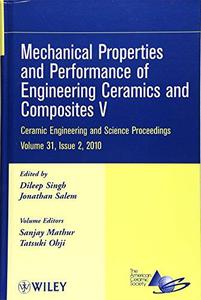
Mechanical Properties and Performance of Engineering Ceramics and Composites V: Ceramic Engineering and Science Proceedings, Volume 31 By
2010 | 366 Pages | ISBN: 0470594675 | PDF | 18 MB
This volume is a compilation of papers presented in the Mechanical Behavior and Performance of Ceramics & Composites symposium during the 34th International Conference & Exposition on Advanced Ceramics and Composites (ICACC) held January 24-29, 2010, in Daytona Beach, Florida. The Mechanical Behavior and Performance of Ceramics & Composites symposium was one of the largest symposia in terms of the number (>100) of presentations at the ICACC'10. This symposium covered wide ranging and cutting-edge topics on mechanical properties and reliability of ceramics and composites and their correlations to processing, microstructure, and environmental effects. Symposium topics included: *Ceramics and composites for engine applications *Design and life prediction methodologies *Environmental effects on mechanical properties *Mechanical behavior of porous ceramics *Ultra high temperature ceramics *Ternary compounds *Mechanics & characterization of nanomaterials and devices *Novel test methods and equipment *Processing - microstructure - mechanical properties correlations *Ceramics & composites joining and testing *NDE of ceramic components
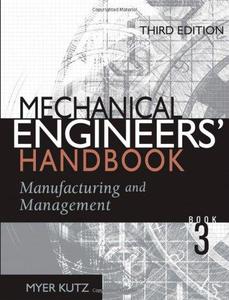
Mechanical Engineers' Handbook: Manufacturing and Management, Volume 3, Third Edition By
2005 | 833 Pages | ISBN: 0471719870 | PDF | 12 MB
The updated revision of the bestseller--in a more useful format! Mechanical Engineers' Handbook has a long tradition as a single resource of valuable information related to specialty areas in the diverse industries and job functions in which mechanical engineers work. This Third Edition, the most aggressive revision to date, goes beyond the straight data, formulas, and calculations provided in other handbooks and focuses on authoritative discussions, real-world examples, and insightful analyses while covering more topics than in previous editions. Book 3: Manufacturing and Management is comprised of two major parts covering manufacturing and management. The centerpiece of part one, "the handbook within the handbook," covers manufacturing topics related to production, metal working, statistical quality control, and computer-integrated manufacturing. Topics new to the handbook include physical vapor deposition, environmentally conscious manufacturing, and dealing with process technology in the context of design, tooling, manufacturing, and quality engineering. The second part covers a broad array of topics conveniently organized into five areas: * Project and people management * Fundamentals of financial management * Total Quality Management; registrations, certifications, and awards; and safety engineering * Legal issues, including patents * Online and print information sourcesContent: Chapter 1 Product Design for Manufacturing and Assembly (DFM&A) (pages 1-21): Gordon LewisChapter 2 Achieving Enterprise Goals with New Process Technology (pages 22-67): Steve W. TuszynskiChapter 3 Classification Systems (pages 68-109): Dell K. AllenChapter 4 Production Planning (pages 110-172): Bhaba R. Sarker, Dennis B. Webster and Thomas G. RayChapter 5 Production Processes and Equipment (pages 173-244): Magd E. Zohdi, William E. Biles and Dennis B. WebsterChapter 6 Metal Forming, Shaping, and Casting (pages 245-285): Magd E. Zohdi and William E. BilesChapter 7 Mechanical Fasteners (pages 286-314): Murray J. Roblin and Anthony LuscherChapter 8 Statistical Quality Control (pages 315-327): Magd E. ZohdiChapter 9 Computer?Integrated Manufacturing (pages 328-348): William E. Biles and Magd E. ZohdiChapter 10 Material Handling (pages 349-395): William E. Biles, John S. Usher and Magd E. ZohdiChapter 11 Coatings and Surface Engineering: Physical Vapor Deposition (pages 396-413): Allan Matthews and Suzanne L. RohdeChapter 12 Product Design and Manufacturing Processes for Sustainability (pages 414-443): I. S. Jawahir, P. C. Wanigarathne and X. WangChapter 13 Managing Projects in Engineering Organizations Using Interorganizational Teams (pages 445-483): Karen L. Higgins and Joseph A. MaciarielloChapter 14 Managing People (pages 484-504): Hans J. ThamhainChapter 15 Finance and the Engineering Function (pages 505-530): William BrettChapter 16 Detailed Cost Estimating (pages 531-563): Rodney D. StewartChapter 17 Investment Analysis (pages 564-582): Byron W. JonesChapter 18 Total Quality Management, Six Sigma, and Continuous Improvement (pages 583-615): Jack B. Revelle and Robert Alan KemerlingChapter 19 Registrations, Certifications, and Awards (pages 616-638): Jack B. Revelle and Cynthia M. SabelhausChapter 20 Safety Engineering (pages 639-700): Jack B. RevelleChapter 21 What the Law Requires of the Engineer (pages 701-724): Alvin S. Weinstein and Martin S. ChizekChapter 22 Patents (pages 725-757): David A. Burge and Benjamin D. BurgeChapter 23 Electronic Information Resources: Your Online Survival Guide (pages 758-776): Robert N. SchwarzwalderChapter 24 Sources of Mechanical Engineering Information (pages 777-784): Fritz Dusold and Myer Kutz

Maximising the Benefits of Psychotherapy: A Practice-Based Evidence Approach By David Green, Gary Latchford(auth.)
2012 | 224 Pages | ISBN: 0470683155 | PDF | 2 MB
Maximising the Benefits of Psychotherapy critiques Evidence-Based Practice and describes other approaches to improving the effectiveness of therapy, such as Practice-Based Evidence and the use of client feedback. The authors include a summary of key research findings and an accessible guide to applying these ideas to therapeutic practice. Puts forward a critique of existing research claiming that certain psychotherapy programmes are more effective than others in treating specific disordersContent: Chapter 1 The Equivalence of Psychotherapies (pages 1-22): Chapter 2 Research Into Psychotherapy: What Works and How? (pages 23-43): Chapter 3 The Conventional Wisdom (pages 45-66): Chapter 4 The Real Experimenter (pages 67-86): Chapter 5 Practice?Based Evidence (pages 87-108): Chapter 6 Using Client Feedback in Psychotherapy - The Research (pages 109-127): Chapter 7 Using Client Feedback in Psychotherapy - In Practice (pages 129-150): Chapter 8 Ideas in Action (pages 151-170): Chapter 9 Transforming Training and Supervision (pages 171-193): Chapter 10 Conclusions and Some Recommendations (pages 195-209):
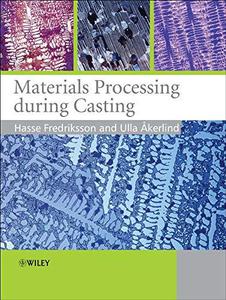
Materials Processing during Casting By Hasse Fredriksson, Ulla Akerlind(auth.)
2006 | 434 Pages | ISBN: 0470015136 | PDF | 6 MB
Casting is one of the most important processes in materials technology. In this unique book, each step in the casting and solidification process is described and models are set up, which in many cases can be approximated by simplified analytical expressions. All casting methods are featured, including component casting, ingot casting and continuous casting. Applications of the results are given in numerous worked examples within the text. Conclusions on how to avoid cracks, solidification pores, slag inclusions and other defects of the castings, can be drawn from the theoretical models. These conclusions are based on research results, which together give an idea of the development in the manufacture of castings. Most chapters conclude with a number of exercises, answers to which are given at the end of the book. The accompanying 'Guide to Exercises', provides the complete solutions to each of the exercises.Content: Chapter 1 Component Casting (pages 1-13): Chapter 2 Cast House Processes (pages 15-28): Chapter 3 Casting Hydrodynamics (pages 29-57): Chapter 4 Heat Transport during Component Casting (pages 59-92): Chapter 5 Heat Transport in Cast House Processes (pages 93-138): Chapter 6 Structure and Structure Formation in Cast Materials (pages 139-182): Chapter 7 Microsegregation in Alloys - Peritectic Reactions and Transformations (pages 183-225): Chapter 8 Heat Treatment and Plastic Forming (pages 227-253): Chapter 9 Precipitation of Pores and Slag Inclusions during Casting Processes (pages 255-309): Chapter 10 Solidification and Cooling Shrinkage of Metals and Alloys (pages 311-368): Chapter 11 Macrosegregation in Alloys (pages 369-410):
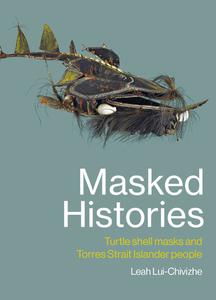
Masked Histories: Turtle Shell Masks and Torres Strait Islander People by Leah Lui-Chivizhe
English | July 5th, 2022 | ISBN: 0522879144 | 313 pages | True EPUB | 11.18 MB
Masked Histories celebrates the remarkable Torres Strait Islander turtle shell masks that were taken or traded by Europeans throughout the nineteenth century. Displayed as curiosities or art in museums and galleries around the world, the Islander knowledges they held were silenced. Delving into old stories from both Islanders and the foreigners who had travelled to the region, Lui-Chivizhe reanimates the masks with their Islander meaning and purpose and, in so doing, powerfully recreates the past. Masked Histories advances a vivid new history, uncovering the profound importance of the turtle shell masks to all Islanders and revealing much about the people who created them.

Maryland Day Cookbook: Enjoy a Chill Celebration of Maryland Day at Home by Stephanie Sharp
English | 2022 | ISBN: N/A | ASIN: B08W4WQRM2 | 77 pages | EPUB | 3.58 Mb
Are you wondering if you can celebrate Maryland Day this year since last year it was canceled? Are you hoping to have your friends and family at your place and enjoy a chill day with home-cooked food that connects your heart with the history of Maryland Day? Are you wondering if you can design the perfect menu around the event without any external help?
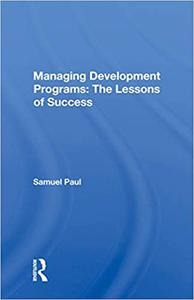
Samuel Paul, "Managing Development Programs: The Lessons of Success: The Lessons Of Success"
English | ISBN: 0367019396 | 2019 | 264 pages | EPUB | 6 MB
Why do some development programs succeed while so many others fail? What role do managerial and institutional innovations play in program performance? Dr. Paul's comparative analysis of six successful development programs selected from Asia, Africa, and Latin America provides important answers to these questions. The study shows that a clear focus on a single goal or service; decentralization; the use of network structures and beneficiary participation consistent with the complexity of the program environment; and highly adaptive planning, monitoring, and motivation processes are among the common features of the six successful programs. The design and orchestration of these and other elements were facilitated by the relative autonomy of the programs and by the continuity and commitment of their leadership. There is no dearth of studies of failure in the field of development, points out Dr. Paul, but studying failure does not necessarily lead to insights into the positive management actions and institutional innovations that have led to successful programs. This study, the first of its kind to focus on high performers, is unique in the lessons it offers on the strategic management of development programs.
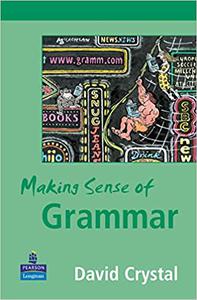
David Crystal, "Making Sense of Grammar"
English | ISBN: 0582848636 | 2004 | 400 pages | PDF | 19 MB
* Moves the analysis of grammar and language structure onto the next stage - interpreting it from a semantic and pragmatic point of view. * Clearly shows how grammar works in different literary contexts - literary, non-literary, spoken and written. * Explores a wide range of linguistic themes, including sociolinguistics, language acquisition and register. * Provides guidance on how people can put their knowledge of grammar into daily practice and how this is interpreted by others. * Organised in the same way as Rediscover Grammar for quick reference. Unique, lively writing and clear explanations from the world-class grammar expert.

Make Your Own Cheese: 12 Homemade Recipes for Cheddar, Parmesan, Mozzarella, Self-Reliant Cheese, and More! (The Backyard Renaissance Collection) by Caleb Warnock
English | June 2nd, 2021 | ISBN: 1942934785 | 76 pages | True EPUB | 4.33 MB
The author of Forgotten Skills of Self-Sufficiency offers a step-by-step guide to making delicious, all-natural cheese from scratch.
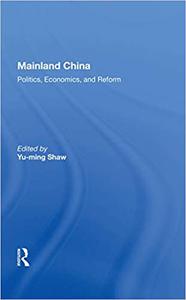
Yu-ming Shaw, "Mainland China: Politics, Economics, and Reform"
English | ISBN: 0367006243 | 2019 | 674 pages | EPUB | 3 MB
Over the past several years, Mainland China has undertaken reforms in various domestic areas, including culture and society, education, the economy, and the Communist Party. In addition, since September 1982 Peking has begun to pursue an independent course in foreign relations. In this volume, based on the Thirteenth Sino-American Conference in Taipei, contributors provide a penetrating analysis of the problems Peking faces in trying to implement reforms and of possible future developments in its domestic and foreign policies. In Part 1 they examine ideological theory and practice, party reform, the Hong Kong question, political corruption, population controls, and cultural and educational problems. Part 2 includes discussion of the Mainland Chinese economic system as a whole, the issue of special economic zones, and agricultural reforms. The final part focuses on China's foreign policy, looking specifically at Peking's relations with India and Western Europe and at the Washington-Peking-Moscow triangle.


